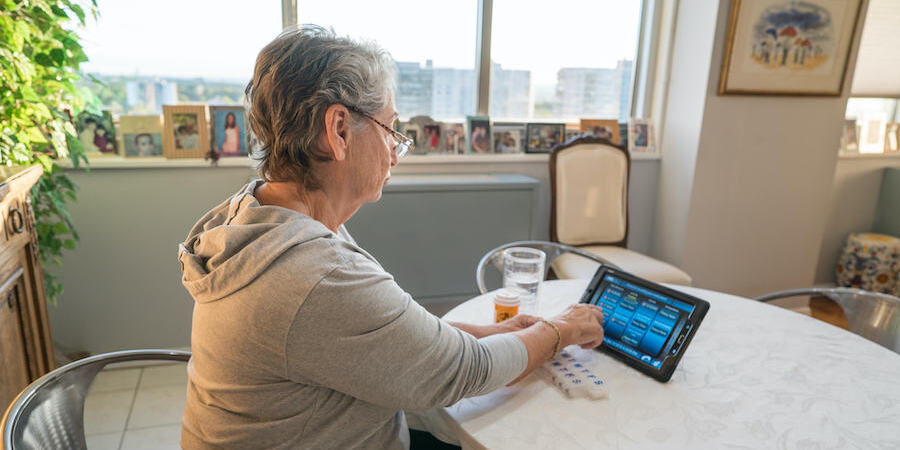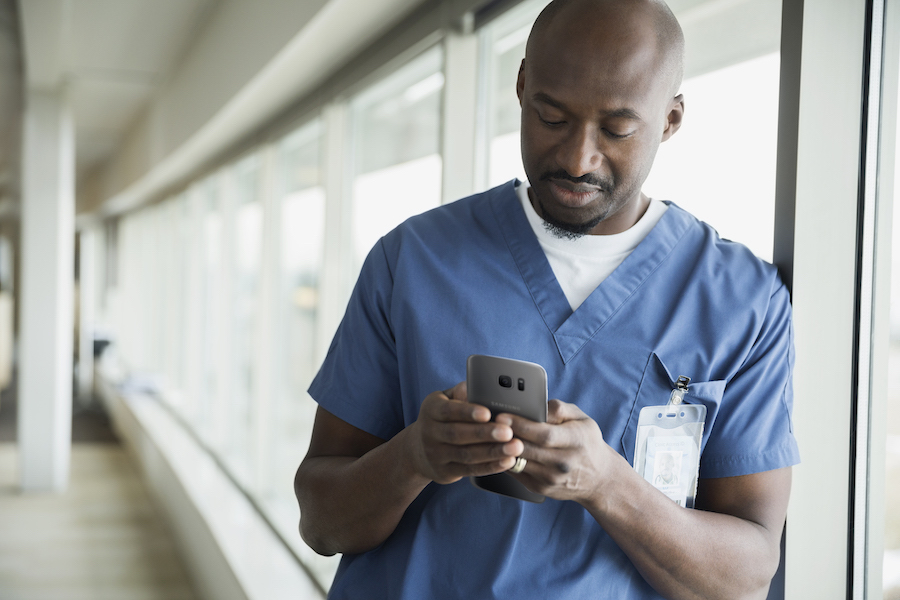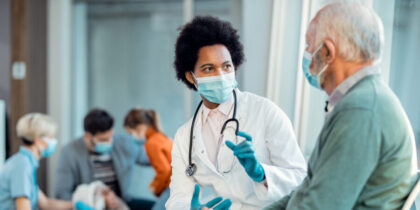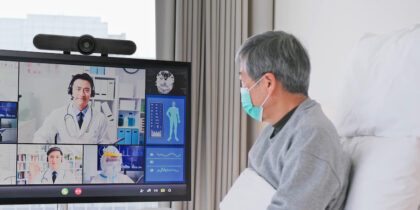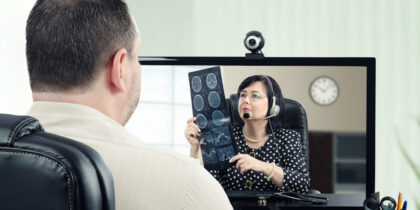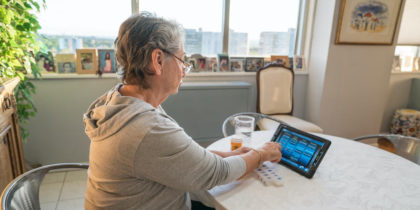“People long believed that seeking medical attention was best done physically in front of a doctor. Sometimes in emergency situations, that’s true. But COVID-19 made people understand there are other ways to seek healthcare,” explains Josh Klein, CEO of Emerest LLC. Emerest provides home care and healthcare in New York, New Jersey, Connecticut and Missouri, and has long advocated for remote care technologies, often described as remote patient monitoring or RPM.
RPM had gained traction before COVID-19, but the pandemic accelerated its widespread adoption. Patients, caregivers and even health regulators have embraced RPM as a necessity. Some care providers and home health agencies are now expanding their RPM beyond clinical care to include social, emotional and mental health needs. Emerest is using Samsung Galaxy tablets to aid its staff with all areas of patient care — personal as well as clinical.
RPM: An invaluable tool during a pandemic
Many people have known about virtual doctors’ appointments for some time, but realizing it’s possible and being willing to try it are two different things. “With COVID-19, it was healthier for people, especially the elderly, to stay home. They, their families and their caregivers finally realized they could use technology to still get the healthcare they needed,” explains Klein. Emerest saw the resistance to telehealth break down for patients and caregivers alike.
At the same time, telehealth providers like Health Recovery Solutions (HRS) saw legislative and regulatory obstacles loosened as a result of the pandemic. “Since the outbreak, I’ve seen more change from a regulatory standpoint in three to four months than I have in the past six years,” says Rich Curry, vice president of business development for HRS. “Telehealth and RPM had to come into play. People were quarantined and under stay-at-home orders. It was too dangerous to have high-risk patients only have access to healthcare by taking a trip to a hospital,” he explains. Curry notes that the regulations loosened by the pandemic included allowing RPM and telehealth in patients’ homes and loosened distance site requirements.
The change in mindset and regulations surrounding telehealth paved the way for Emerest to launch its RPM program. The organization began the program in late March 2020. Today, 500 of their patients have tablets. Since the start of the program, they have seen a 40 percent decrease in hospitalization rates among their patient population.
Simplified patient experience
Home health aides and care providers employed by Emerest use HRS’ PatientConnect Complete and PatientConnect Core accessed via Samsung Galaxy tablets, which run on Android.
For higher-acuity patients, the Complete solution wirelessly pairs the tablet with other medical devices like a blood pressure cuff or a blood glucose monitor. Data from those devices uploads to the tablet automatically and can be shared with care providers. The tablet can also be used for video or voice calls, patient health quizzes and reminders, such as when to take medicine.
The Core solution uses only the tablet, and patients can choose to manually input device data. Klein says patient have responded well to the tablets, which are user-friendly and a convenient size for reading and handling. “User feedback has been phenomenal. Many have responded like kids in a candy shop, very excited to interact with another human by using the video functions on the devices,” says Klein.
How RPM and telehealth answer an urgent need
The tablets are a good fit for RPM and telehealth. When caring for patients with chronic conditions, gathering health data remotely provides real-time insight into a patient’s health. That information can then be acted on with a care intervention that makes a positive impact on outcomes.
For example, a recent patient in the RPM program registered a low blood pressure reading of 86/59. Within three minutes of that reading, the Emerest care team reached out to the patient and decided a paramedicine response team should be dispatched. On arrival of the paramedicine team, the patient’s reading had dropped even lower. The patient was quickly admitted to the hospital and stayed for two days. After the stay, the patient was discharged healthy and well, and back under the care of the Emerest team. Since the intervention, the patient’s vitals have gone up and stayed within a normal range.
“With this information, our nurses and therapists can make adjustments and care changes as needed. RPM helps us provide better clinical outcomes for patients,” explains Klein.
How smart are your clinical communications?
Take this quick assessment to evaluate your hospital's technology use and get personalized advice. Download Now
The future of RPM and telehealth
The nursing and therapy Emerest provides is critical, but the pandemic has highlighted an equally important aspect of healthcare: the social, emotional and mental side.
Humans need connection to stay healthy. With quarantine and social distancing, at-risk populations find themselves even more vulnerable and alone. Emerest is using the solutions from HRS to tackle those issues and provide a greater level of care to patients and clients. For example, data gathered via the HRS solutions showed that some Emerest patients were experiencing grief. With that information, the company began offering group meetings — via video available on the tablet — on how to deal with grief. The sessions provided helpful social interaction and information on how to cope. “We’ve used these technologies to create a community. Using the Samsung tablets and software from HRS, patients now have a go-to place to address their health from the comfort of home,” says Klein.
HRS is impressed with how Emerest has expanded at-home care. “Direct patient healthcare is an obvious fit, a way to stay on top of patient vitals, symptoms and care visits. But Emerest goes beyond that,” says Curry. “They have learned how to personally connect, socially interact and address other non-physical aspects of care.”
Samsung helps HRS simplify their solution delivery. “Samsung has played a major role in helping make HRS solutions easy and ready for our customers. Prior to using Samsung Knox Configure, we were provisioning one tablet at a time, which took hours per device. Now we’re able to remotely push our software out to hundreds or even thousands of tablets at once. This has had a tremendous effect on the logistics team’s output,” notes Alex Ellis, vice president of logistics and supply chain for HRS.
Explore Samsung’s virtual care solutions for the new normal of healthcare.
